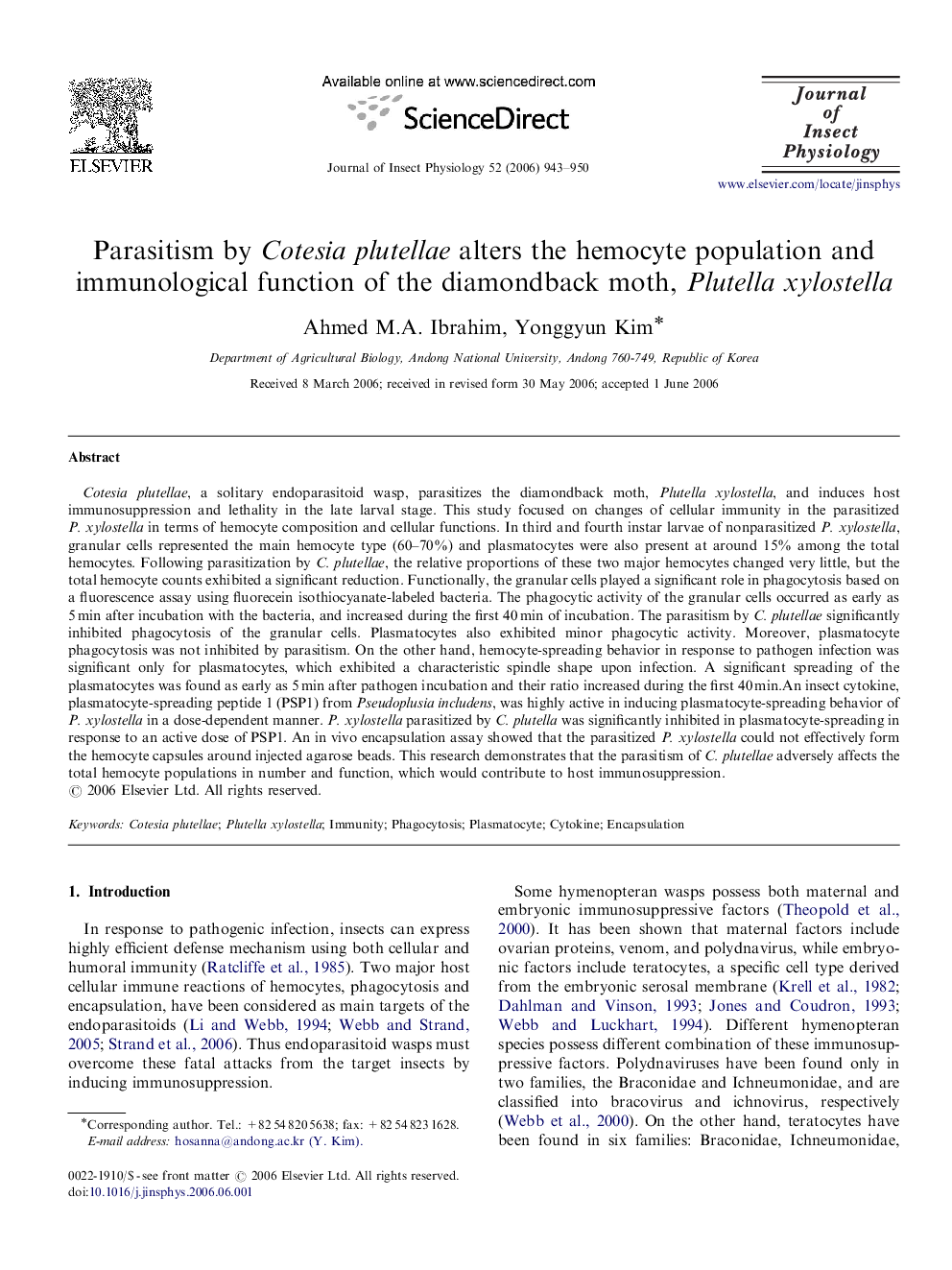| Article ID | Journal | Published Year | Pages | File Type |
|---|---|---|---|---|
| 2841661 | Journal of Insect Physiology | 2006 | 8 Pages |
Cotesia plutellae, a solitary endoparasitoid wasp, parasitizes the diamondback moth, Plutella xylostella, and induces host immunosuppression and lethality in the late larval stage. This study focused on changes of cellular immunity in the parasitized P. xylostella in terms of hemocyte composition and cellular functions. In third and fourth instar larvae of nonparasitized P. xylostella, granular cells represented the main hemocyte type (60–70%) and plasmatocytes were also present at around 15% among the total hemocytes. Following parasitization by C. plutellae, the relative proportions of these two major hemocytes changed very little, but the total hemocyte counts exhibited a significant reduction. Functionally, the granular cells played a significant role in phagocytosis based on a fluorescence assay using fluorecein isothiocyanate-labeled bacteria. The phagocytic activity of the granular cells occurred as early as 5 min after incubation with the bacteria, and increased during the first 40 min of incubation. The parasitism by C. plutellae significantly inhibited phagocytosis of the granular cells. Plasmatocytes also exhibited minor phagocytic activity. Moreover, plasmatocyte phagocytosis was not inhibited by parasitism. On the other hand, hemocyte-spreading behavior in response to pathogen infection was significant only for plasmatocytes, which exhibited a characteristic spindle shape upon infection. A significant spreading of the plasmatocytes was found as early as 5 min after pathogen incubation and their ratio increased during the first 40 min.An insect cytokine, plasmatocyte-spreading peptide 1 (PSP1) from Pseudoplusia includens, was highly active in inducing plasmatocyte-spreading behavior of P. xylostella in a dose-dependent manner. P. xylostella parasitized by C. plutella was significantly inhibited in plasmatocyte-spreading in response to an active dose of PSP1. An in vivo encapsulation assay showed that the parasitized P. xylostella could not effectively form the hemocyte capsules around injected agarose beads. This research demonstrates that the parasitism of C. plutellae adversely affects the total hemocyte populations in number and function, which would contribute to host immunosuppression.
